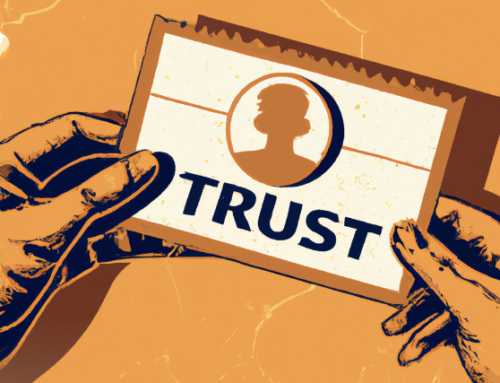Introduction
Blockchain technology has emerged as one of the most transformative technological innovations of recent times. It has the potential to revolutionize the way we interact with each other, transact, and do business. In this blog post, we’ll explore what blockchain is, how it functions, and what brands can use it for.
Bitcoin, the world’s first blockchain, was deployed for the first time in 2009 by creator Satoshi Nakamoto. The very first block, also known as the “Genesis Block,” was written to be untradeable and is the foundation on which the rest of the blockchain rests. One of the first real world uses of Bitcoin—known to the crypto community as “Bitcoin Pizza Day”—occurred on May 22, 2010 when Laszlo Hanyecz used 10,000 bitcoin for the delivery of 2 Papa John’s pizzas in Jacksonville, Florida.

What is blockchain?
Blockchain technology has been around for over a decade and is becoming increasingly popular. At its core, a blockchain is a decentralized, digital ledger that is used to record transactions. The ledger is maintained by a network of computers, called nodes, that validate and verify each transaction. These transactions are recorded in blocks, which are linked together in a chain. Hence the name “blockchain.” But blockchain is more than just a ledger: it’s a way to create decentralized systems that have key advantages over centralized systems currently in use.
This decentralized approach means that there is no central point of control—and no central point of failure, making blockchain more resilient to attacks and failures. The system is designed to be more trustworthy, and it eliminates the need for intermediaries, such as banks, payment processors, and other middlemen.
One of the most significant features of a blockchain is its transparency. Anyone on the network can see all the transactions recorded on the blockchain. That pizza transaction we mentioned earlier? View it and all other Bitcoin transactions publicly on Mempool.
Never fear, however: the data on the blockchain is also secure and tamper-proof, thanks to complex cryptographic algorithms and consensus mechanisms.
The data is secure because each block produces a unique hash based on the data within it. Regardless of the amount or type of data inputted, hashes are a fixed length—this feature makes it essentially impossible to hack. However, the same data will always produce the same hash, so it is easy to verify data has been entered correctly. Because each block also includes the hash of the block before it, changing one block in the middle of the chain will invalidate all subsequent blocks, thus making it harder for hackers to replace valid data in the chain.

How does blockchain work?
A blockchain network consists of several nodes, each of which has a copy of the entire blockchain. When a transaction is initiated, it is broadcast to all the nodes on the network. Each node validates the transaction, checking to ensure that it meets specific criteria, such as having sufficient funds in the web3 wallet initiating the payment or meeting certain regulatory requirements. Once a consensus is reached among a majority of the nodes, the transaction is recorded on the blockchain.
The data on the blockchain is secured using cryptography. Each block on the blockchain contains a unique cryptographic hash, which acts as a digital fingerprint. The hash of each block is dependent on the data in the block and the hash of the previous block. This creates an unbreakable chain of blocks, where any attempt to modify a block would invalidate all subsequent blocks.
In order for a blockchain to be hacked and changes accepted, hackers must hack not just one computer or one block—they must control at least 51% of the computers within a blockchain’s network. While these types of attacks are not entirely impossible, they are much, much harder to pull off than the hacking of a centralized system, which can be taken down by a single point of failure.
For people who prefer to think in pop culture analogies, think of the Death Star as a traditional centralized network, which can be taken down with one solid shot in the right place. Blockchain is more like the T-1000 Terminator, which must have all its liquid metal components destroyed, all at the same time, to be defeated.
This more secure set-up reduces the risk of hacking and data breaches, making it an ideal technology for industries such as finance, healthcare, and government.

What can Brands use Blockchain for?
Blockchain technology has numerous applications across various industries. While the technology has been mainly used in finance (known to the community as DeFi, or decentralized finance), its power goes far beyond basic transactions. Almost any use case that can benefit from transparent, secure, and verifiable record-keeping can be applied to blockchain.
Payments and transactions
Blockchain can be used to create a secure and transparent payment system, enabling brands to transact with their customers and partners without the need for intermediaries. As noted above, this is the primary use case currently. By removing the need for intermediaries, people who are unbanked or who do not have the credit score history or government identification documents needed to be approved for traditional loans can still obtain capital reliably, in a way that protects both lending and receiving parties. The decentralized currency has also acted as a safe alternative to protect against hyper-inflation of official paper currencies, particularly in countries with economic or political turbulence.
It would be a mistake, however, to think this technology is only applicable to finance.
Supply chain management
Blockchain can also be used to create a transparent and secure supply chain, enabling brands to track their products from the source to the end consumer. This can help brands ensure the authenticity of their products, prevent counterfeiting, and improve accountability in their supply chain.
Large companies with complex supply chains can use blockchain to verify and transparently show various claims. For example, Apple could use blockchain to track the lithium used in its iPhone batteries and publicize that mining was only done through companies engaging in environmentally sound mining or businesses free of child labor. Should the company find otherwise, the problematic sources would be readily identifiable for remediation.
As an example in action, Walmart Canada has used blockchain to resolve payment disputes in its vast supply chain. The solution has automated invoice and payment management for its 70+ external freight carriers, reducing payment delays, transaction costs, and the number of discrepant invoices. Blockchain has made it easy for enterprises with otherwise incompatible systems to share key operational details and collaborate effectively.
Digital identity management
Blockchain can be used to create a decentralized digital identity management system, which can help brands verify the identity of their customers and protect their data privacy.
In practice, this identity verification process is based on how web3 transactions are produced: each transaction is signed with a public key which corresponds to a user’s private wallet. To prevent tampering or unauthorized use of a web3 wallet, a public key can only be produced after the wallet owner inputs a separate, highly guarded private key.
Because each user of a blockchain must create their transactions from a web3 wallet, brands can more easily authenticate customers by checking their users’ public keys and / or by viewing a wallet’s transaction history. This makes it easier to prevent fraud, identity theft, and other types of unauthorized access to sensitive data.
In addition to providing enhanced security and privacy, blockchain-based identity management systems can also offer greater flexibility and convenience to customers. For example, a user’s digital identity can be used to log in to multiple services and platforms, without the need to create separate usernames and passwords for each one. This can help reduce the complexity and frustration associated with managing multiple digital identities across different platforms, similar to web2 applications like Facebook sign-in, but without the privacy concerns often associated with web2 social media.
One brand that has already implemented a blockchain-based digital identity management system is Civic. Civic’s platform allows users to control their own digital identities and share them securely with third parties, such as banks, retailers, and other businesses. This can help reduce the risk of identity theft and fraud, while also providing users with greater control over their own personal data.
Loyalty programs
Blockchain can be used to create a transparent and secure loyalty program, enabling brands to reward their customers for their loyalty and engagement. After accruing so many points based on desirable activities like voting in polls or providing personal information, users could receive unique content, airdropped NFT tickets to live events, and many more perks, all based on the brand’s vision.
The key to success in this arena of web3 marketing is building community and offering ongoing initiatives that keep people engaged. Consider Starbucks Odyssey and how, shortly after opening their web3 loyalty program to the first cohort on the waiting list, they launched a secondary marketplace. The rewards that consumers did not want to redeem became valuable assets with liquidity that could be redeemed on an open marketplace—with Starbucks receiving fees from each sale. The move created a new source of revenue from a program that is typically a loss leader, and empowered customers to find the same perks more valuable than ever before at the same time.
By using blockchain to create a more transparent and flexible loyalty program, brands can provide greater value to their customers and foster stronger relationships. The use of blockchain also makes it easier to manage and track rewards, reducing the risk of fraud or abuse. This can help build trust and loyalty among customers, while also generating additional revenue for the brand.
Marketing
NFTs, which are stored on the blockchain, can be used to deliver unique rewards and utilities to holders. Rewards can run the gamut from additional free NFTs to early access to sales, exclusive products, company announcements, and discounts. Blockchain marketing is a powerful tool that brands have yet to fully take advantage of, with imaginative brands like Starbucks, Lamborghini, and Louis Vuitton leading the way.
By using NFTs as a marketing tool, brands can offer their customers unique, limited-edition rewards that cannot be replicated or duplicated. This can help build trust and loyalty among customers, while also providing additional value to the brand.

Key Takeaways
So, what is blockchain? Blockchain is technology with the potential to transform the way we do business by offering a secure, transparent, and tamper-proof way to record transactions, verify ownership of tokenized items, market to a target audience, and provide proof of one’s identity. Brands can leverage blockchain to create innovative solutions that improve their operations, enhance customer experience, and drive growth. In fact, many of the world’s most pioneering brands are already paving the way by exploring use cases in loyalty, marketing, and other avenues far beyond the current usage of blockchain in decentralized finance.
As blockchain continues to mature, we can expect to see more brands adopting this technology to drive their business forward as they learn from the risk-takers. Don’t let your brand get left behind: reach out to Web3 Pro to learn more about proven strategies to engage consumers across all stages of the buyer’s journey using web3 marketing.




